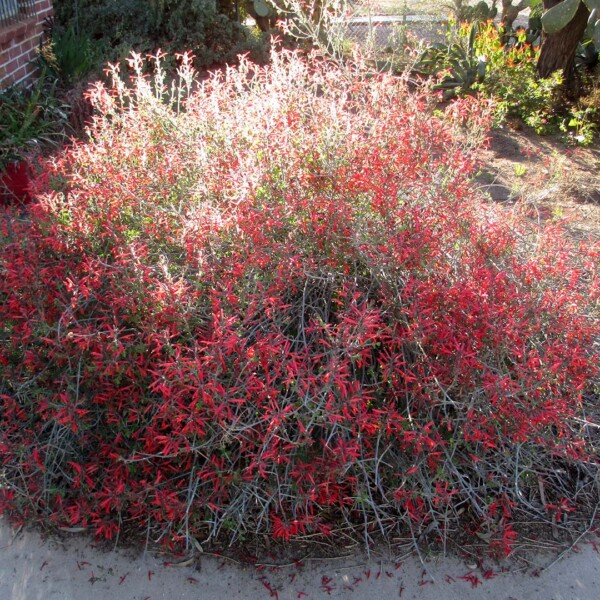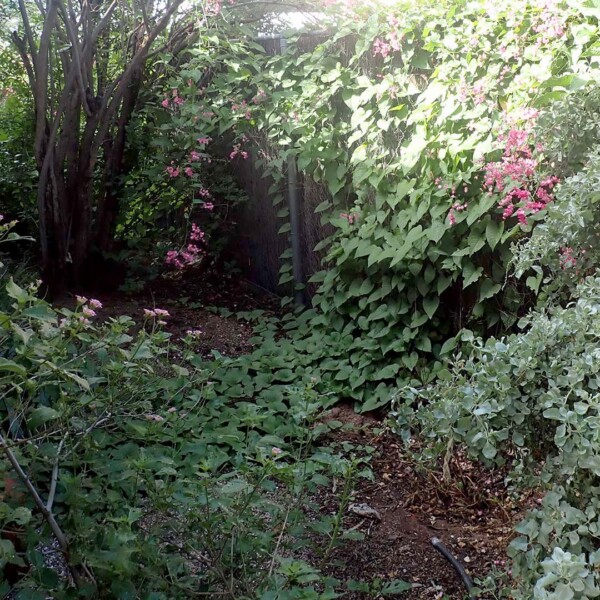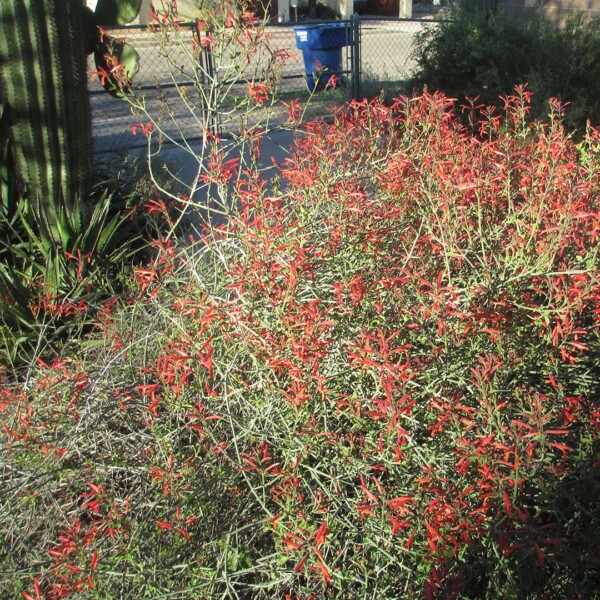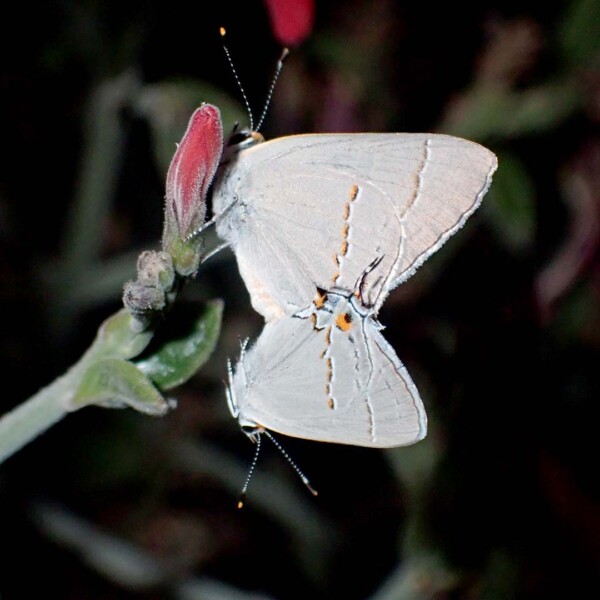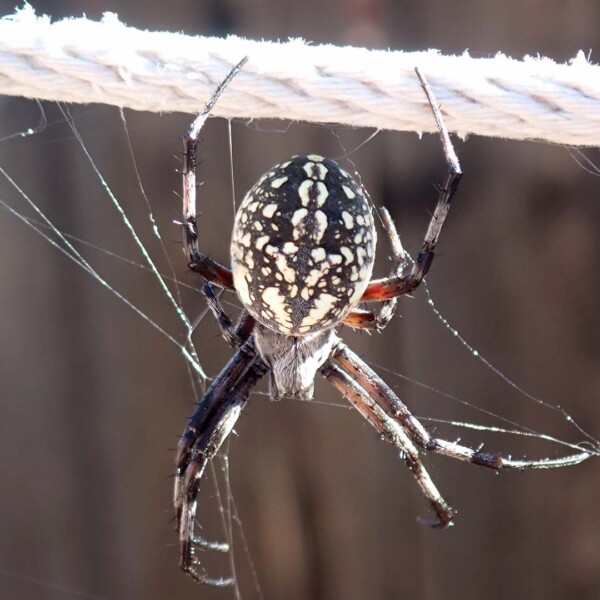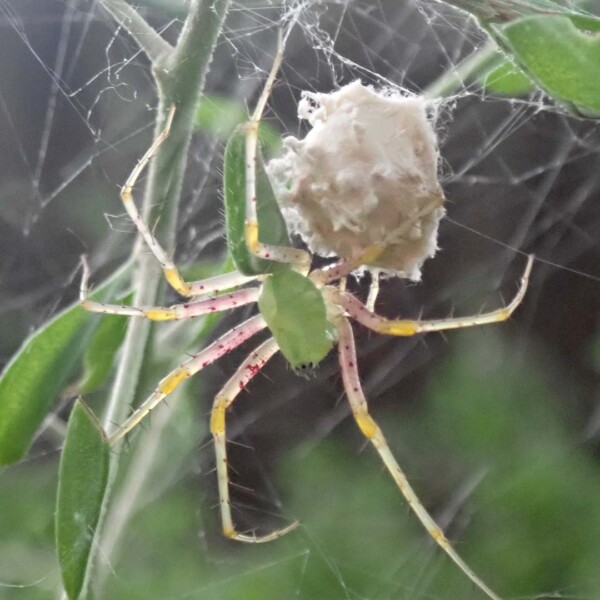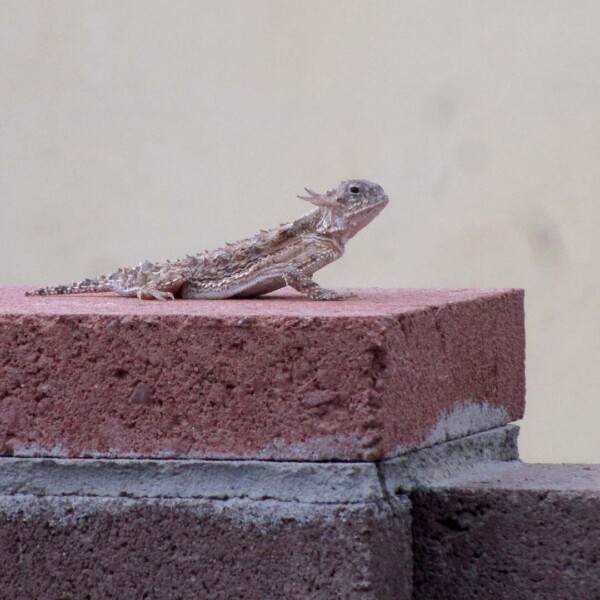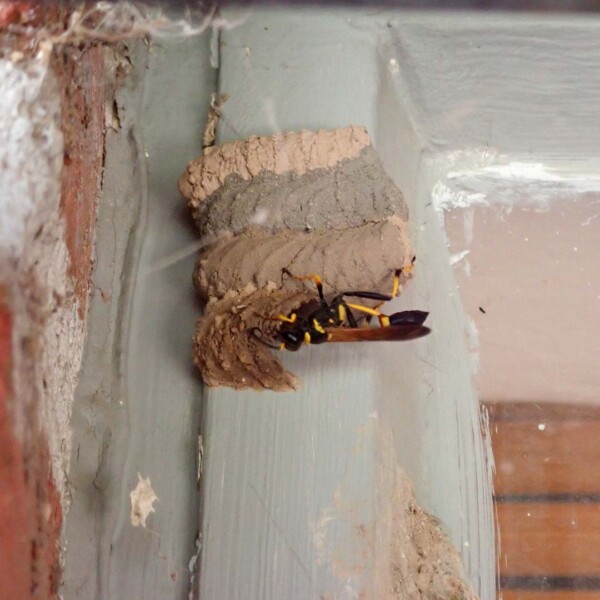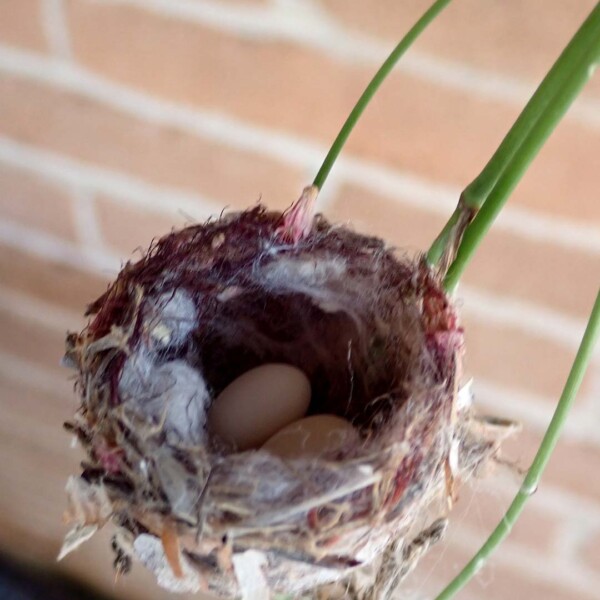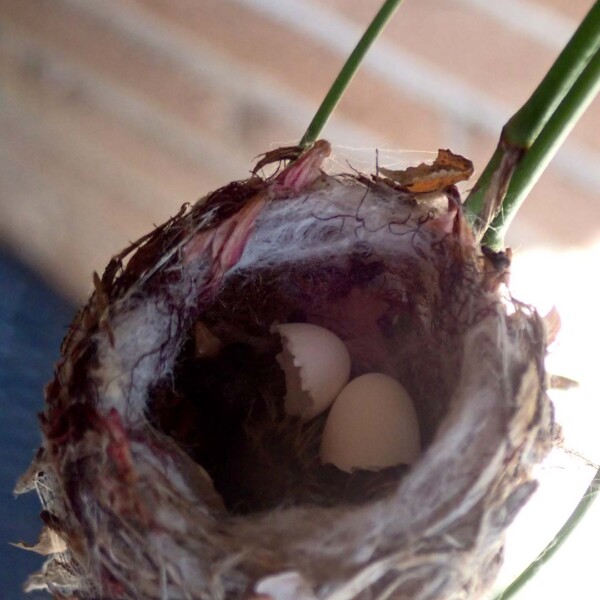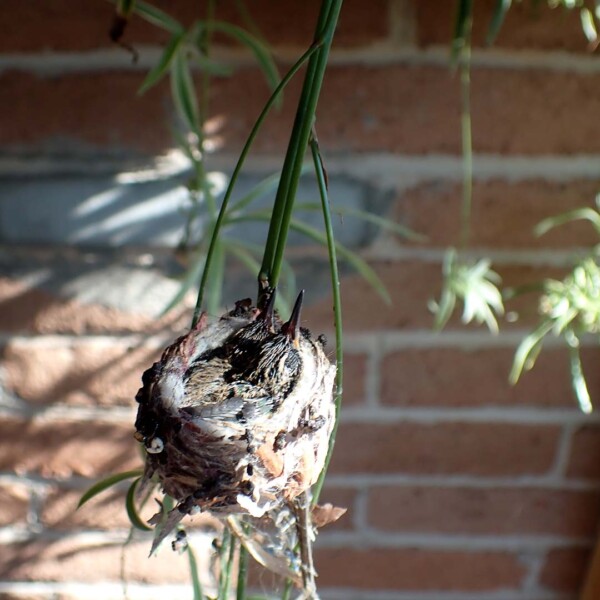Guest Blog by Randy Serraglio
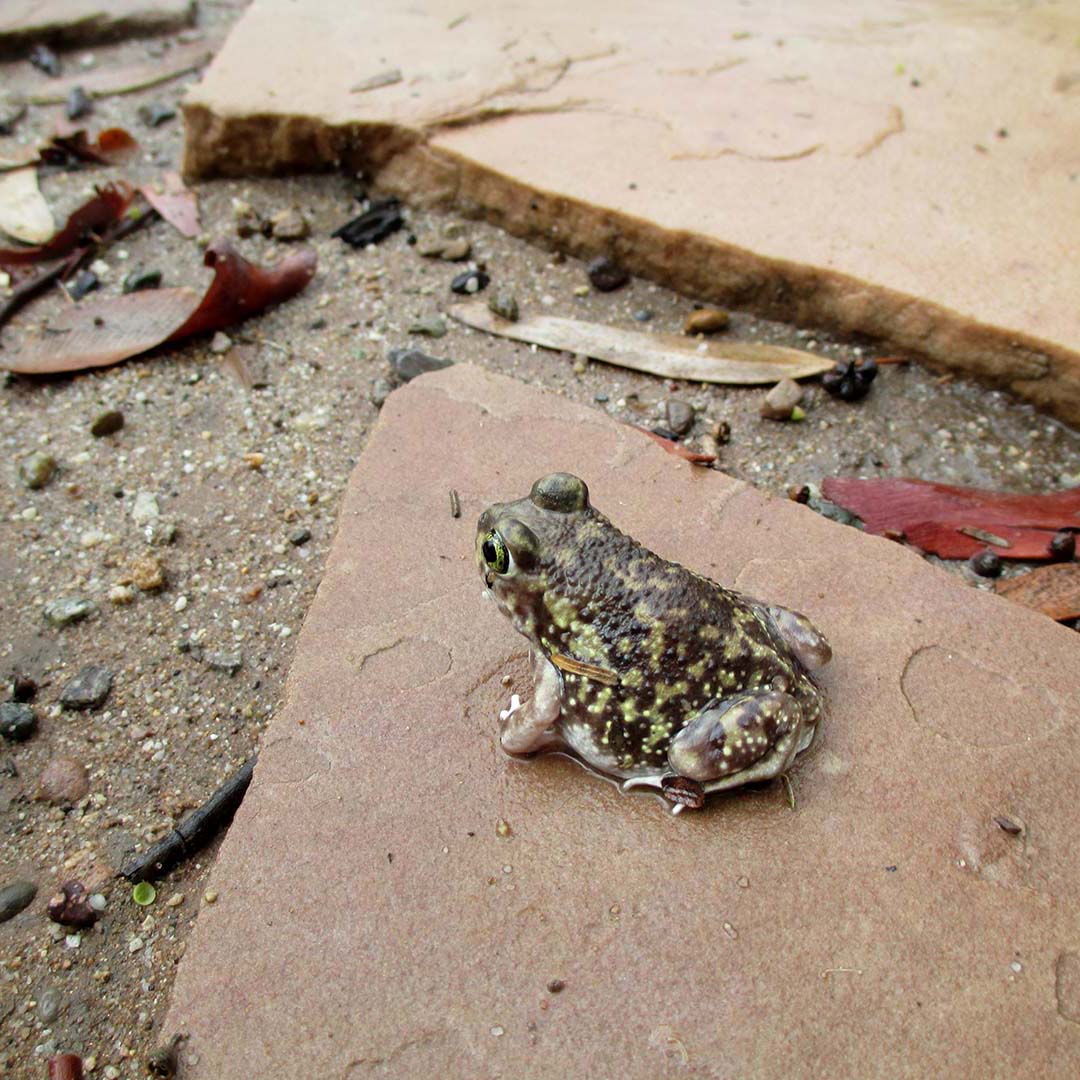
A Couch’s spadefoot — one of the many creatures I started to notice once we made our backyard into a natural haven.
When my partner and I moved into our house about 11 years ago, we saw great potential for creating urban habitat, even though it was just a regular-sized city lot half a mile from Tucson’s downtown skyscrapers.
It helps that Arroyo Chico flood-detention basins are nearby, with acres of habitat that support a wide variety of birds and other species, including a population of Couch’s spadefoots that breed in summer rain pools just 150 meters from our house. That’s well within dispersal distance for these cuties. So, sure enough, they pop up in our yard every monsoon.
We let the existing vegetation grow and aggressively planted pollinator and food species all over. Half of the new plants died — but hey, half lived. (As my partner insisted, just keep planting different things in various places ‘til they stick!)
Now we have a bona fide yard-jungle of mesquites, hackberries, wolfberries, and sacaton, as well as dozens of native flowering plants and cactus.
Together they support a wide range of creatures we’ve come to know and love over the years, including horned lizards, whiptails, blind snakes, leafcutter bees, hawkmoths, cactus beetles, and butterflies. We’ve christened it the Flacasita Neighborhood Wildlife Refuge. (I’m the “flaco” (skinny guy) and all our welcome to our “casita.”)
Birds also love our yard — which is great, because we really love birds.
Many avian species are adapting to urban habitat, and it seems like more and more all the time. This Feb. 17-20, the annual Great Backyard Bird Count is a national effort to document that trend. It’s a way for average folks like us to participate in citizen science and report the birds that visit our spaces so we can pair some hard data with anecdotal experiences.
Our yard list is impressive, especially considering where our house is located. We’ve seen more than half a dozen kinds of raptors, three different woodpeckers (including ladderbacks and a wayward acorn), kingbirds, orioles, gnatcatchers, roadrunners, pyrrhuloxia, and other weirdos you might not expect to see in the city. Among the daily visitors are Abert’s towhees, verdins, yellow-rumped warblers in the winter, and Lucy’s warblers in the spring.
Cooper’s hawks nest every year in a giant eucalypt very close by, so we’re in their territory. We hear their nasal calls daily and watch them eat their latest catch on top of the wooden utility poles in the alley. Nothing more entertaining than sitting in a patio chair with a beverage watching those crafty Coops rip apart a juicy little lump of flesh. (Did I mention I was a total bird nerd?)
Our yard is also a hummer haven, anchored by a massive chuparosa that puts on thousands of blossoms during the spring peak. This leads to fierce competition among these tiny warriors. We’ve documented Anna’s, broad-billed, Costa’s and black-chinned hummingbirds, and all but the latter have performed breeding flight displays in our air space.
The ultimate triumph came in the summer of 2021, when a broad-billed hummingbird built her nest between two tendrils of a spider plant in the shade under our ramada. We’d seen her roosting on a wire there on brutally hot days during the apocalyptic summer of 2020 (so, like, every day). Apparently, she was pleased enough with our space that she built this beautiful little nest a mere five feet off the ground the next summer. This disrupted our routine a bit — I had to peek out the Man Cave window to see if she was gone before running out to take care of business on the patio — but we didn’t mind.
I can’t overstate the joy we felt upon realizing that this tiny bird trusted us enough to build a nest in the middle of our human space. Our coexistence continued, even after the two nestlings successfully fledged. One stuck around and overwintered here — I watched his colorful plumage fill out over the ensuing year. When the chuparosa is blooming, he visits it repeatedly every day. I saw his brilliant indigo and green blazing in this morning’s sun. Our little boy is all grown up! (Um, yeah, bird nerd.)
I’ve learned this much from Sky Island Alliance over the years: “Plant it, and they will come!” Nurture your yard, and you will nurture nature. So if you can, take part in the Great Backyard Bird Count this year from Feb. 17-20. You can join a webinar on Feb. 15 to learn more, or you can jump right in and, in as little as 15 minutes, record the birds you see in your yard. The birds will thank you, one way or another.
Since the 1990s, Randy Serraglio has volunteered with Sky Island Alliance and worked professionally for a number of other conservation groups to protect the Sky Islands and Sonoran Desert. He loves to observe and photograph nature’s tiniest scenes and most spectacular landscapes, along with everything in between.


